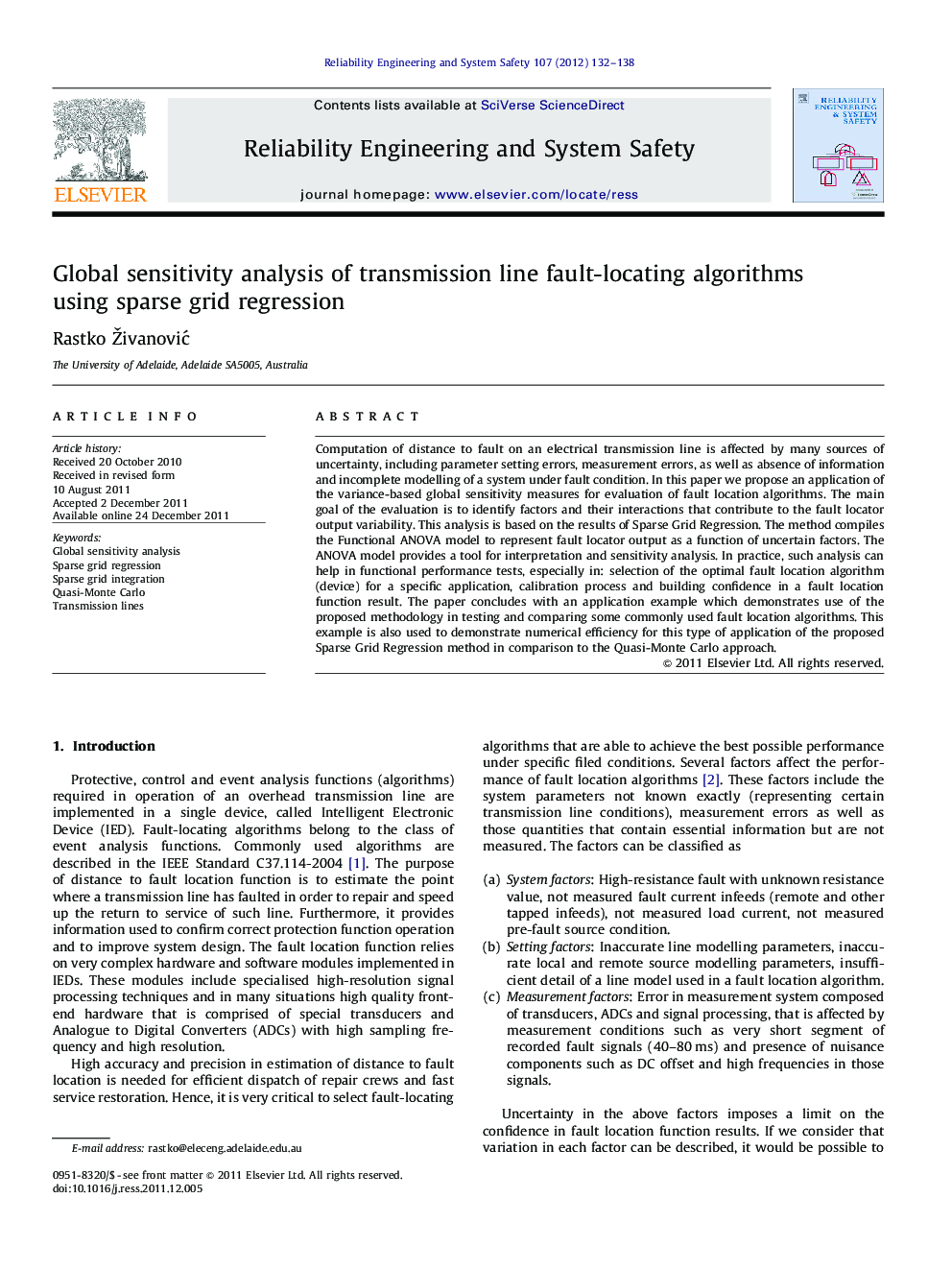| Article ID | Journal | Published Year | Pages | File Type |
|---|---|---|---|---|
| 806382 | Reliability Engineering & System Safety | 2012 | 7 Pages |
Computation of distance to fault on an electrical transmission line is affected by many sources of uncertainty, including parameter setting errors, measurement errors, as well as absence of information and incomplete modelling of a system under fault condition. In this paper we propose an application of the variance-based global sensitivity measures for evaluation of fault location algorithms. The main goal of the evaluation is to identify factors and their interactions that contribute to the fault locator output variability. This analysis is based on the results of Sparse Grid Regression. The method compiles the Functional ANOVA model to represent fault locator output as a function of uncertain factors. The ANOVA model provides a tool for interpretation and sensitivity analysis. In practice, such analysis can help in functional performance tests, especially in: selection of the optimal fault location algorithm (device) for a specific application, calibration process and building confidence in a fault location function result. The paper concludes with an application example which demonstrates use of the proposed methodology in testing and comparing some commonly used fault location algorithms. This example is also used to demonstrate numerical efficiency for this type of application of the proposed Sparse Grid Regression method in comparison to the Quasi-Monte Carlo approach.
► Sparse Grid Regression (SGR) method has been developed and presented in the paper. ► The SGR method is able to fit ANOVA model to input/output data of a black-box function. ► The SGR provides variance-based sensitivities to be used for Global Sensitivity Analysis (GSA). ► The SGR algorithm relies on the numerical multi-dimensional integration on a sparse grid. ► Application example presented is GSA of fault-locating algorithms used in electrical networks.
